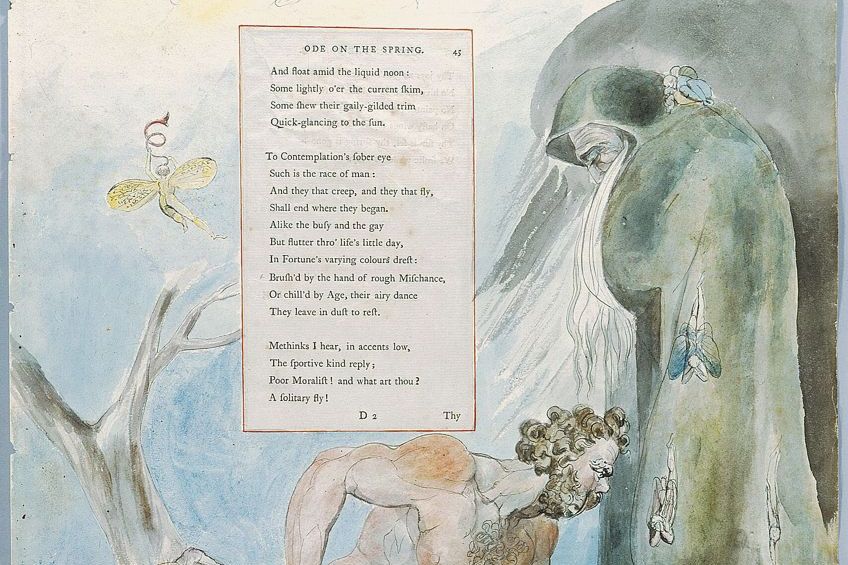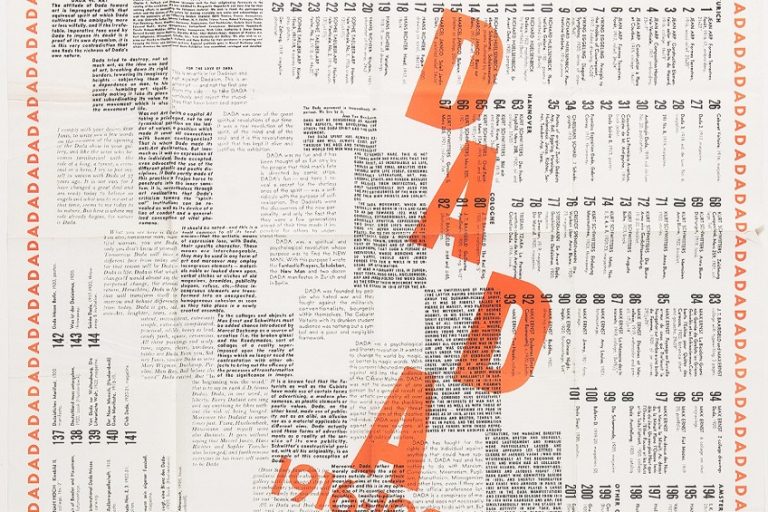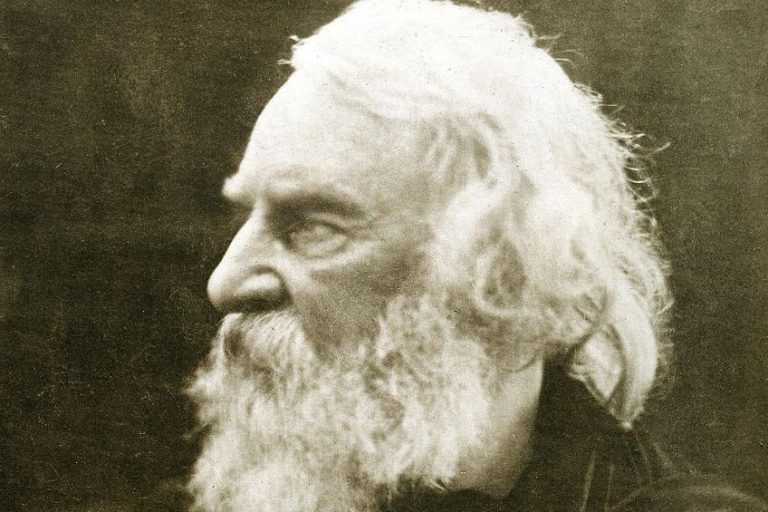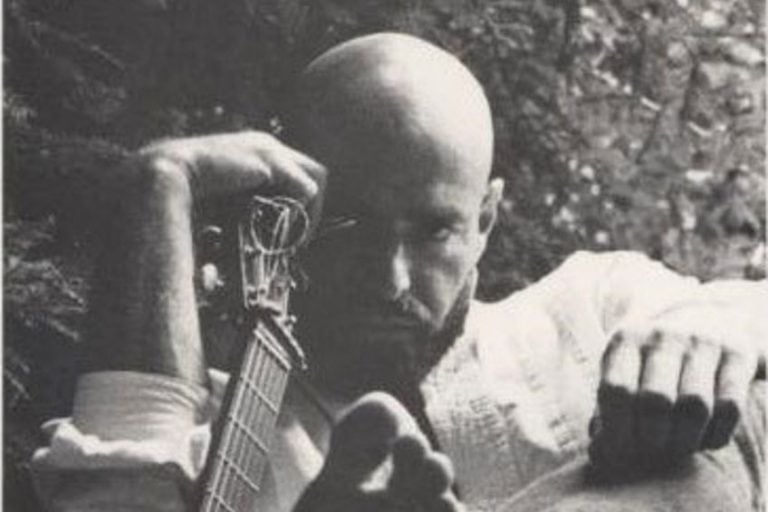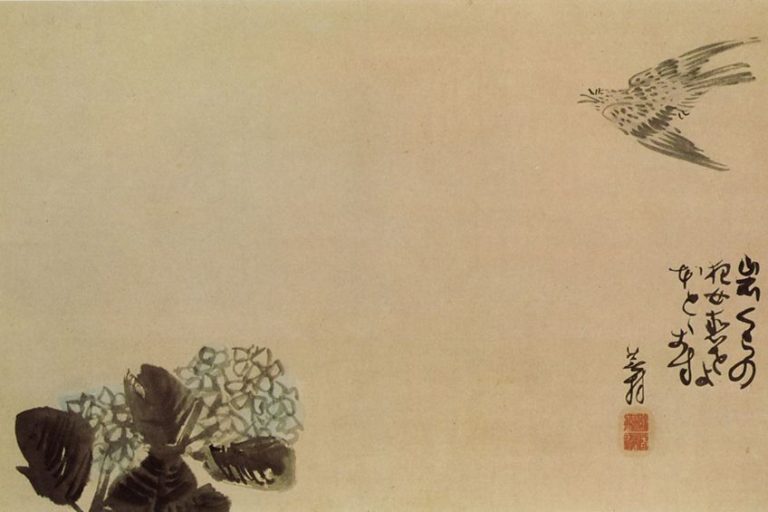How to Write an Ode Poem – A Guide for Beginners
If you want to know how to write an ode poem, you first need to know a few things about ode poems. Writing an ode poem requires an understanding of the ode poem format, the ode rhyme scheme, the ode poem structure, and its characteristics. In addition, it is also beneficial to understand some of the history of ode poetry, and a few of the most famous examples of the ode poem format. If this is of interest to you, look no further! Let’s dive in and have a look at how to write an ode poem.
How to Write an Ode Poem
The ode is a very old form of poetry that has been around since the time of the ancient Greeks. This particular poetic form is essentially meant to be a kind of celebratory text. It is meant to be used in the appreciation of some person, concept, place, or item. It could be about anything, and so long as it has a more positive and praiseworthy tone, it can be termed a type of ode poetry.

So, when it comes to how to write an ode poem, you may need to pay attention to the traditional ode poem structure to determine if you too wish to follow in a more traditional path, or if you would rather develop your own style. In this article, we will examine some of the most famous traditional ode poem formats, but these are not hard rules and you do not need to follow them when writing an ode.
The ode does not have all that many rules, such as a set ode rhyme scheme, or something similar. There are many different types of odes that have their own general formats, but a poet does not need to make use of any of those rules.
We will examine that in some more detail below. So, let’s get this underway and have a look at how to write an ode.
The History of Ode Poetry
The earliest origins of ode poetry date back to ancient Greece. These early odes were specifically created as celebratory works that were meant to be used to commemorate victories. Some of the most common of these were athletic victories, such as those found in the original incarnation of the Olympic Games. These original odes were also specifically created for performance purposes.
When it comes to the performance aspect of early odes, they were generally created as a kind of choral song. These poems were accompanied by a combination of musical instruments, such as the lyre, and the musical performance was also generally produced in addition to a dance. These dances could have very formalized patterns that made them a common and traditional feature in these kinds of celebrations.
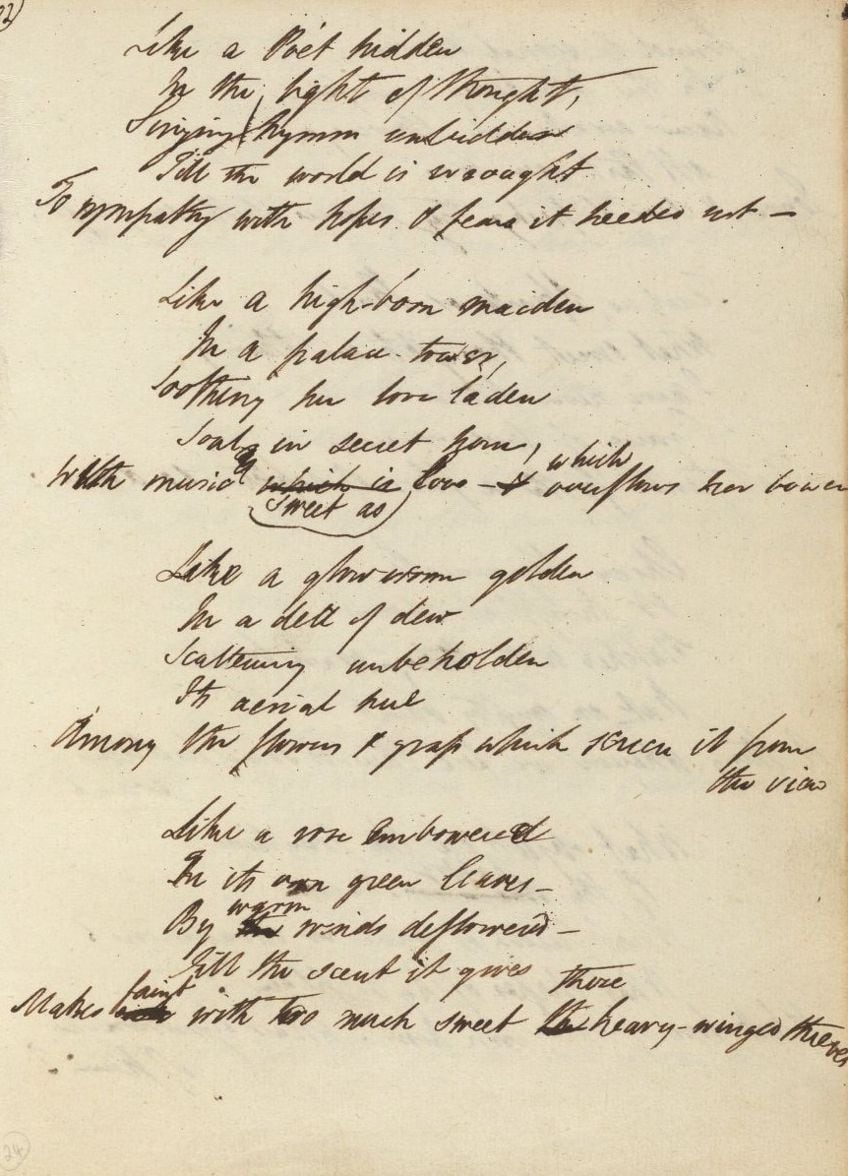
There are a number of different types of ode poems, and they will be discussed below, but the earliest of them came about during the 7th to 6th centuries BCE. This makes the ode one of the oldest and most resilient forms of poetry on the planet. The ode would continue in ancient Greece, and, like many other aspects of Greek culture, it inspired the Romans.
The ancient Roman poet Horace was the next major figure to make use of the ode. The Horatian ode, and what distinguishes it, will be discussed below, but this poet would become a notable figure in the history of the ode. These forms of poetry would continue to be used, but they would not attain the same level of prestige and usage until significantly later. They would emerge throughout Europe at various points, and there was a strong usage of them in other regions too.
However, the biggest revival of the ode poem would occur during the Romantic period in the 18th and 19th centuries.
This period would lead to the resurgence of classical forms, along Pindaric and Horatian lines, in the poems of some of the leading Romantics. Some of the best-known odes in the English language were written during this period.
The ode would continue to be used, but it did not quite reach the same height as the Romantics. This does not mean that ode poems do not exist today, but rather that they do not have the same level of fame that they once possessed. However, there is a lot of room to write an ode poem or two in the contemporary era, and so if you want to write odes, there’s no better time than right now.
The Characteristics of Ode Poetry
There are a number of characteristics for which the ode poem is known. These poems are generally written in celebration or appreciation of something, and this means that, especially in the contemporary era, that the ode is better known for its thematic points than any specific formal ones. However, the ode is also generally associated with a more formal general presentation, but later forms would often do away with this more formal aspect.

There are a number of specific types of ode poems, and they will be discussed below, and they do have specific criteria, aside from the irregular ode. However, let’s first look at some of the more general characteristics of ode poetry. For instance, they often make use of a clear and logical presentation of whatever the poem is about, such as a person or place, they generally make use of a more elevated style of language, and they are often enthusiastic and emotional.
But do odes have to rhyme? They do not. Odes often make use of more specific and regular metrical structures, although irregular odes do not, but the same cannot be said of rhyme. An ode can use a rhyme scheme of some kind, but this is not a necessity for an ode to be considered an ode.
The most important aspects of the ode are thematic, and the tone is also often considered to be an integral part of the general structure of the ode poem format.
The Structure of Ode Poetry
The structure of ode poetry is a difficult thing because it can vary based on the different types of ode poetry that exist. We will soon examine three different types of ode poems, but it can be beneficial to start by discussing how ode poems have been traditionally structured. In classic odes, they generally made use of a very specific three-part structure, and this structure was also conducive to its use as a performance piece.
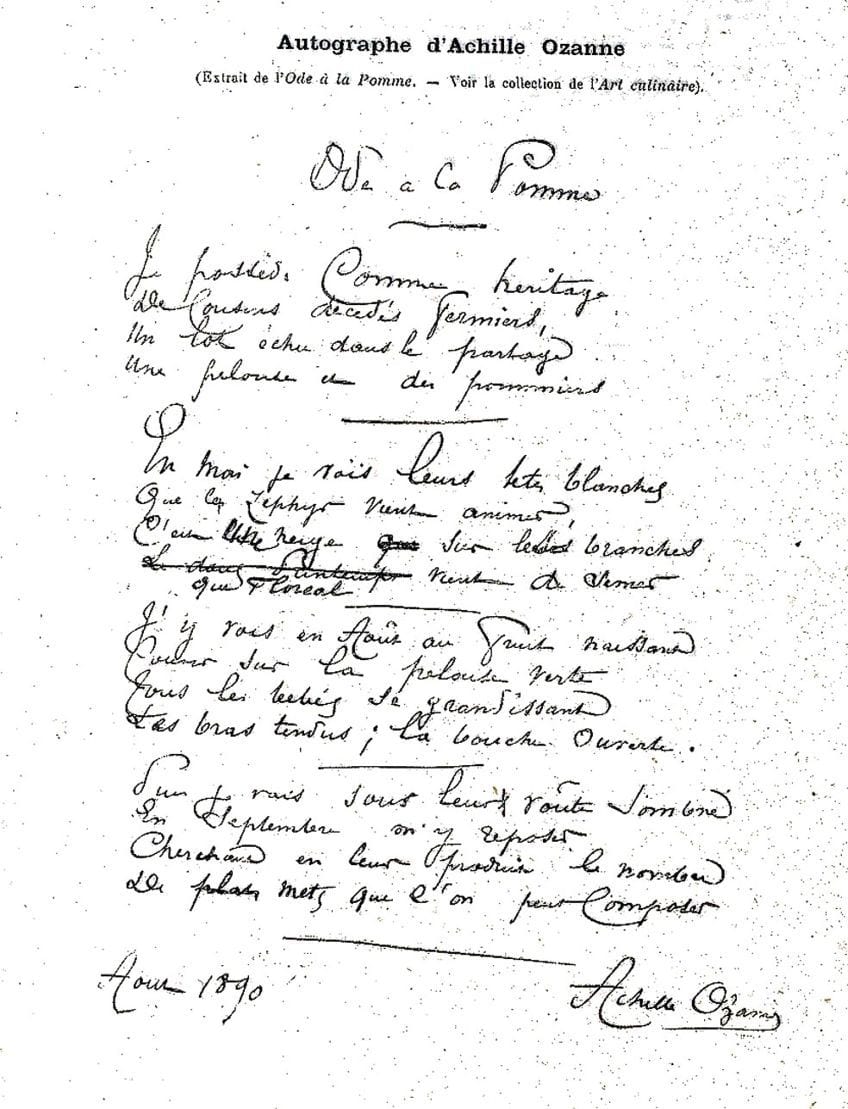
The oldest odes, as has been mentioned, were explicitly geared toward performance. Contemporary odes do not need to follow this kind of specification. However, some contemporary spoken word poems may make use of a general ode structure because of the association that odes have with celebration and a more reverential tone towards whatever it is that is being explored at the moment.
Many ode poems are structured around a more formal presentation, although this is not necessarily the case with more contemporary forms, but this is the case from a more traditional perspective.
For those who want to learn how to write an ode, it can be beneficial to examine ancient and later forms of ode poetry to see the way that they are structured around certain forms or themes.
Types of Ode Poetry
There are two main types of ancient ode poetry, but we are going to examine those two ancient forms alongside a later form that is more commonly used today. The earliest forms of ode poetry originated in ancient Greece, and so that is where we will start our look at the different types of ode poetry.
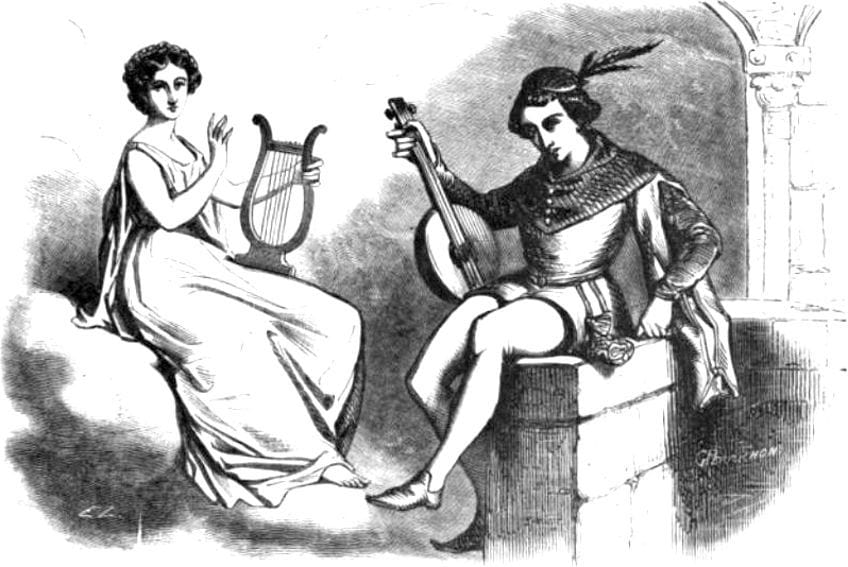
Pindaric Ode
The ode poem has its origins in ancient Greece. This is in general, but the Pindaric ode is the specific type that is most associated with that era. This particular type of ode poem was named after Pindar, who was an original user of this form. He is also often considered to be the creator of ode poetry in general. During this period, the ode was generally associated with performance, but let’s first look at the ode poem format of this particular variety.
The Pindaric ode is noted for making use of a three-part structure.
There is a strophe, an antistrophe, and an epode. These three aspects of the poem, respectively, relate to a repeated unit of the poem that is followed by a harmonious general section, and this is finally concluded with a summarization-type section, and the last section also often makes use of a different meter to distinguish itself from the earlier sections.
When these kinds of odes were first produced, they were generally created to be performed alongside music. They were often sung. Some of the most common locations in which Pindaric poems were performed were at certain types of public events, such as athletic events. One of the most notable of these would be the ancient Olympic Games. The celebratory nature of these poems allowed them to be translated into performances with ease.
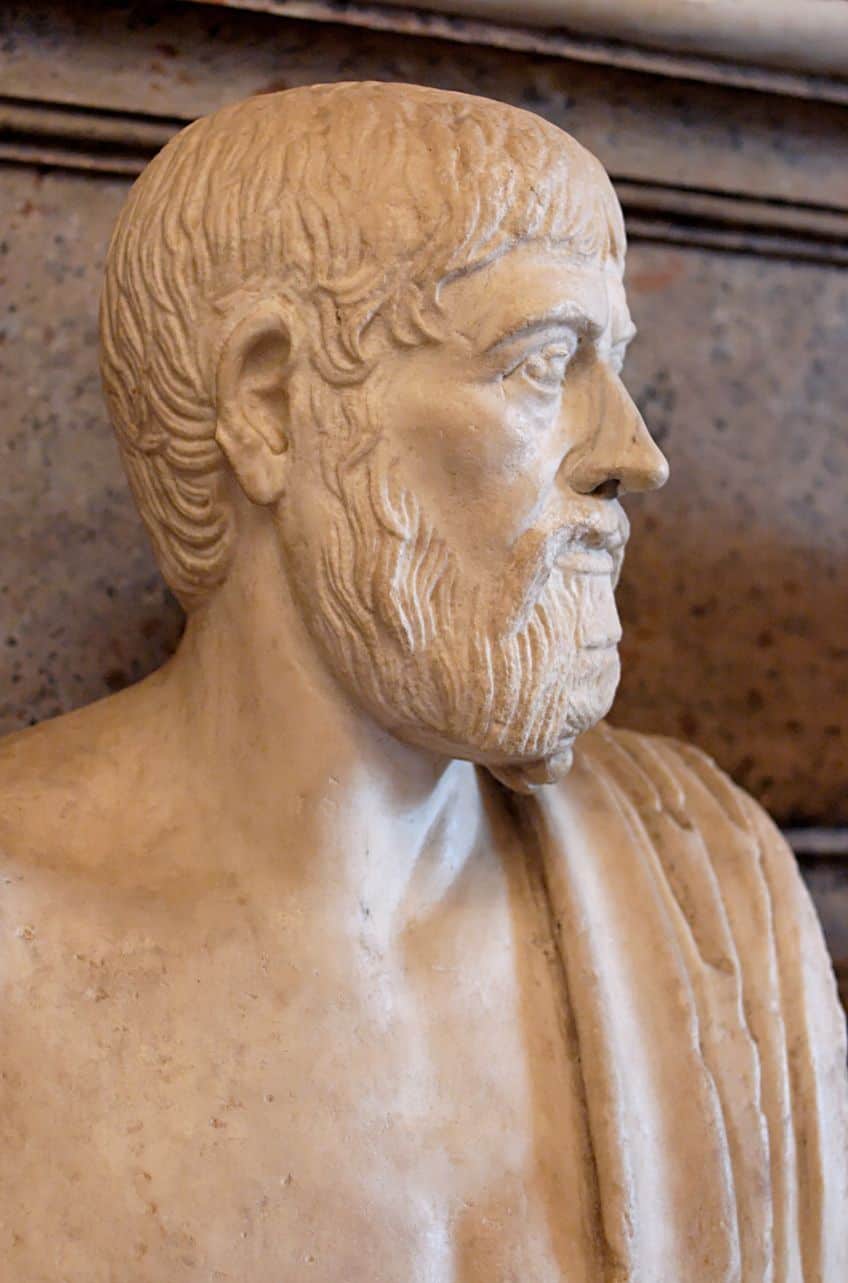
Horatian Ode
The Horatian ode is a later form of ode poetry that did not come about until significantly later than the Pindaric ode. The reason for this is that the Horatian ode is named after Horace, and this poet was not Greek but was rather a Roman. This figure lived during the 1st century BCE and distinguished himself from the earlier types of ode poets by shifting the focus from a more heroic celebration to a more contemplative tone.
The general structure of the Horatian ode is far more informal than the Pindaric ode.
It did not make use of any particular structure, but it was often written in a specific meter. The general idea was that there were no strict rules in comparison to older forms of ode poetry and that it was focused on a very different kind of general tone and topic. Instead of being solely celebratory, it was often about introspection.
Many Horatian odes make use of intimate tones that are calmer and more intimate. These poems would often be celebrations of love or passion. They were also often relatively short in length and did not make use of the kind of action and circumstance that could be found in the earlier form.

Irregular Ode
This final type of ode poem is quite different from the previous ones as it is far freer than what has come before. The Pindaric was often focused on heroic celebration and the Horatian was focused on intimate introspection, but the irregular ode has no real rules and instead allows for greater experimentation.
Thanks to this more open-ended and flexible type of ode poem, which could also be about anything the poet so desired, it became popular amongst the Romantics.
For instance, William Wordsworth made extensive use of irregular odes because it allowed him the freedom to play with the form and do with it what he wanted. The irregular ode can also seem quite like free verse poetry in many ways, but the primary difference is that irregular odes are generally still quite structured in their overall presentation. They may not have definitive rules in some of the ways that other types of ode poems do, but they are not quite as free as free verse. This is because free verse is noted for throwing away many rules of language and grammar along the way, and irregular odes generally retain traditional poetic form.

Examples of Ode Poetry
There are many different examples of ode poetry that could be explored, but for the sake of this article, we will examine two instances of later ode poems. These two poems are from the Romantic era, and they are concerned with wholly different topics. This can show those who want to learn how to write an ode that you do not need to cling to specific topics. There are many different topics that you could make use of when writing odes. So, let’s have a look at a few of these examples of ode poems.
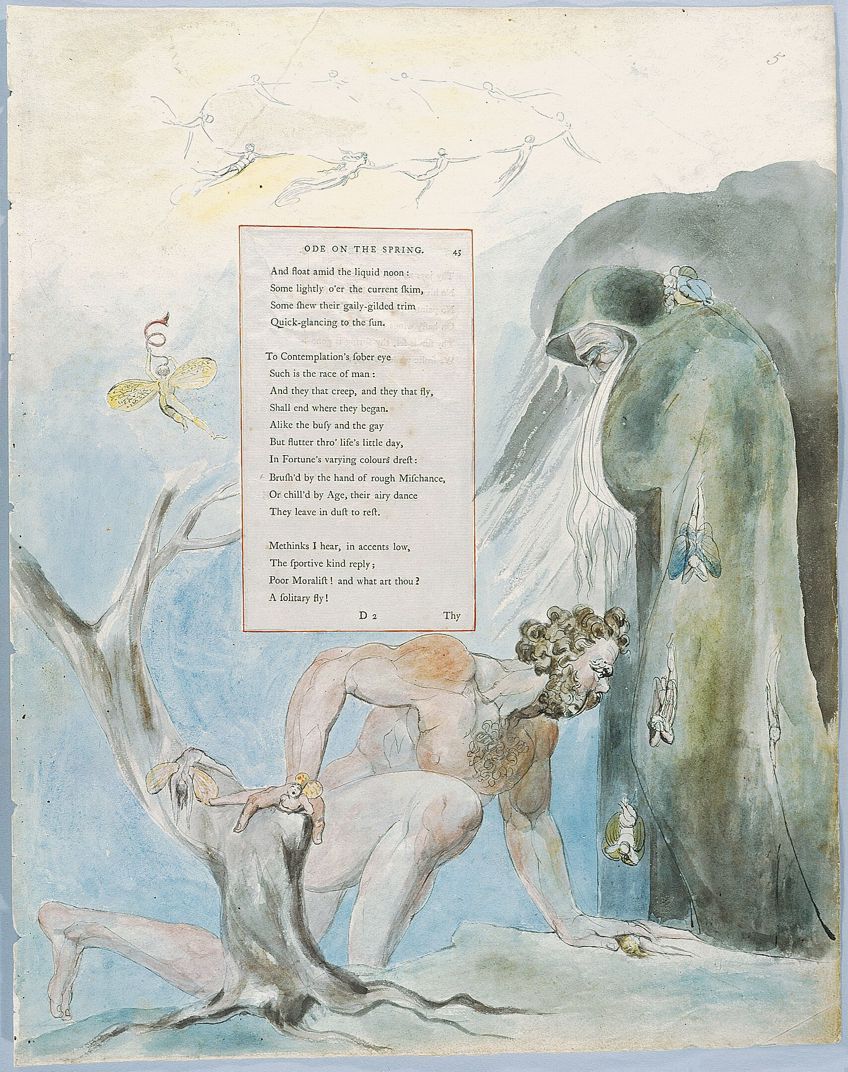
Dejection: An Ode (1803) by Samuel Taylor Coleridge
| Date Published | 1803 |
| Type of Poem | Irregular ode |
| Rhyme Scheme | None |
| Meter | None |
| Topic | Dejection |
Dejection: An Ode is considered to be one of the most famous odes ever written and an important ode in the history of Romantic poetry. The poem is concerned with an exploration of dejection. This is the feeling that one has of a deep and powerful sadness. This kind of sadness can often be all-consuming, and the poem ultimately addresses this feeling that the speaker has regardless of the natural beauty around him or his own imaginative abilities. The feeling is far too persistent and all-encompassing in that moment.
The thing that makes this such an unusual poem in terms of the ode poem format is that it is not concerned with something positive.
Odes are typically noted for their celebratory nature, and this poem is instead focused on a topic as negative as dejection. This emotion is not one that is felt all too easily and is a kind of deep and overwhelming sadness that can overcome someone.
However, for those who want to learn how to write an ode, this poem can show the ways in which even negative emotions can be the focus of an ode. It may not necessarily be celebratory, but it does address it and confront it. The poem also makes use of no set metrical pattern or rhyme scheme, and it instead discusses this concept with the reader with a more conversational tone.
Ode: Intimations of Immortality (1807) by William Wordsworth
| Date Published | 1807 |
| Type of Poem | Irregular Pindaric ode |
| Rhyme Scheme | Variable |
| Meter | Variable |
| Topic | Childhood, memory, and nature |
Ode: Intimations of Immortality is a poem from the Romantic era by William Wordsworth, and it is an example of a poem that follows a Pindaric ode poem format to an extent, but it does so in an irregular arrangement. The poem is concerned with a number of things, often religious in nature.
These aspects are combined with a personal view of his childhood, introspections on the natural world, and the soul.
This ode follows a fairly typical ode poem structure in that it uses elements from Pindaric odes, but it also indicates the way in which an ode can make use of an existing format while also altering and adapting itself to a more contemporary format that can fit in with what the poet wants to do with the poem in question. This is something good to learn when it comes to writing an ode.
For the people who are looking at how to write an ode, paying attention to a great and famous poet like Wordsworth can be immensely beneficial. The way in which various topics and ideas are blended together, the focus on a personalized response to a variety of these aspects, and the tone can work well as a means of inspiration for writing an ode.
Today, we have attempted to look at how to write an ode. Ode poetry has a long and varied history, so when it comes to writing an ode, that is a tradition you are stepping into. It would be best to jump in with two feet! That is why we discussed the history of this format, the ode poem structure, the characteristics required when writing an ode, and a handful of examples of ode poetry. Hopefully, this has been a good introductory text and something that can help you if you wish to know how to write an ode.
Frequently Asked Questions
What Is an Ode Poem?
An ode poem is a subset of lyric poetry. The general idea behind the ode poem format is that it is meant to be written in a more positive tone as it is produced in celebration or appreciation of something. That something could be anything. It could be a person, a general idea, an inanimate object, or even a place. There are no rules for what topic can be discussed in an ode, and the ode poem format is generally determined through this celebratory theme rather than what is being discussed.
What Are the Common Characteristics of an Ode Poem?
Some of the most common characteristics of an ode poem include a more formal presentation, a clearer and less metaphorical use of language, more elaborate styles, and an emotionality that is often meant to be enthusiastic. These poems were originally produced to be performed at celebratory occasions, and this is why they were traditionally written using positive and enthusiastic language.
Do Odes Have to Rhyme?
When it comes to the idea of an ode rhyme scheme, there does not need to be one. However, odes can rhyme. There are no rules with regard to the use of rhyme in an ode, and there are many famous instances of odes that do include rhyme. However, many do not include rhyme. The main point of an ode is to make use of enthusiastic delivery, and that does not require similarity in syllable sounds.
What Are the Types of Ode Poetry?
There are a number of different types of odes, but there are two famous ancient forms known as the Pindaric and the Horatian. There is also one that is more variable than these two and is known as the irregular ode. The variable form is simply known as an irregular ode, and this allows the ode poem format, when using an irregular structure, to have any rules that it wants. While the other two types of odes are quite specific, the irregular ode is marked by its lack of specificity.
When Did Ode Poetry Originate?
The oldest ode poems could be found in ancient Greece. These ancient examples of ode poetry were used as performance pieces that aided in celebrations. Many of the earliest odes were used to celebrate occasions at public events, such as athletic tournaments. For instance, the ancient Olympic Games made comprehensive use of odes to celebrate the victories of athletes.
Justin van Huyssteen is a freelance writer, novelist, and academic originally from Cape Town, South Africa. At present, he has a bachelor’s degree in English and literary theory and an honor’s degree in literary theory. He is currently working towards his master’s degree in literary theory with a focus on animal studies, critical theory, and semiotics within literature. As a novelist and freelancer, he often writes under the pen name L.C. Lupus.
Justin’s preferred literary movements include modern and postmodern literature with literary fiction and genre fiction like sci-fi, post-apocalyptic, and horror being of particular interest. His academia extends to his interest in prose and narratology. He enjoys analyzing a variety of mediums through a literary lens, such as graphic novels, film, and video games.
Justin is working for artincontext.org as an author and content writer since 2022. He is responsible for all blog posts about architecture, literature and poetry.
Learn more about Justin van Huyssteen and the Art in Context Team.
Cite this Article
Justin, van Huyssteen, “How to Write an Ode Poem – A Guide for Beginners.” Art in Context. September 15, 2023. URL: https://artincontext.org/how-to-write-an-ode-poem/
van Huyssteen, J. (2023, 15 September). How to Write an Ode Poem – A Guide for Beginners. Art in Context. https://artincontext.org/how-to-write-an-ode-poem/
van Huyssteen, Justin. “How to Write an Ode Poem – A Guide for Beginners.” Art in Context, September 15, 2023. https://artincontext.org/how-to-write-an-ode-poem/.


